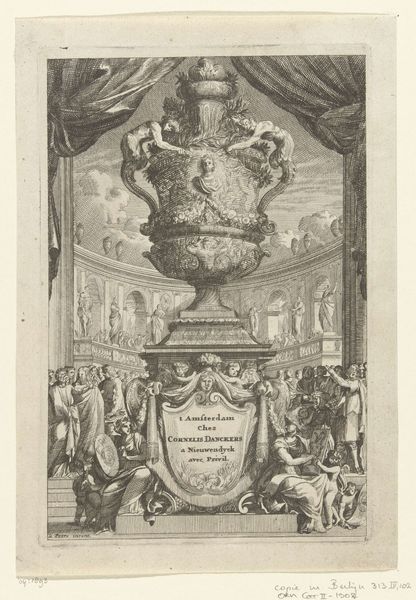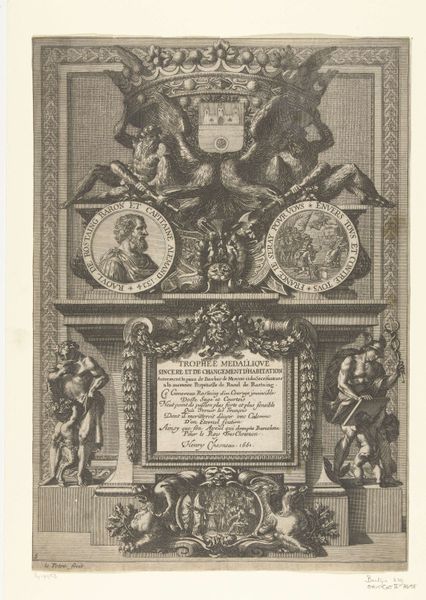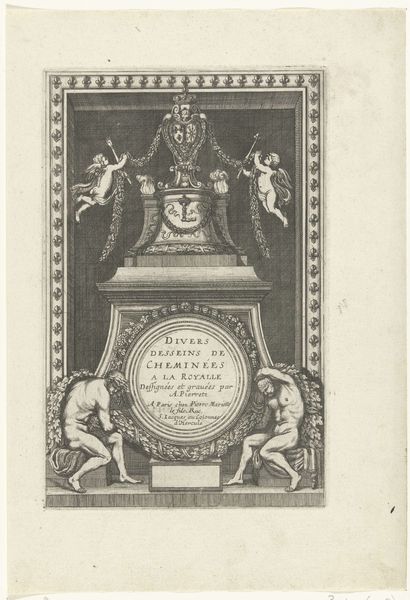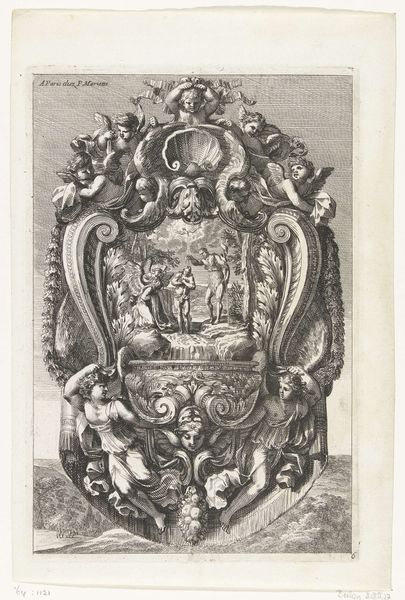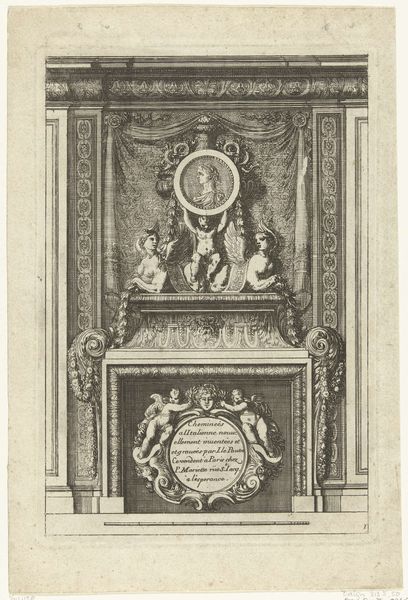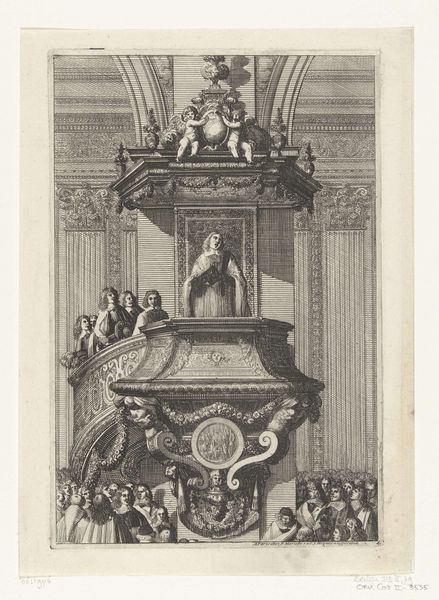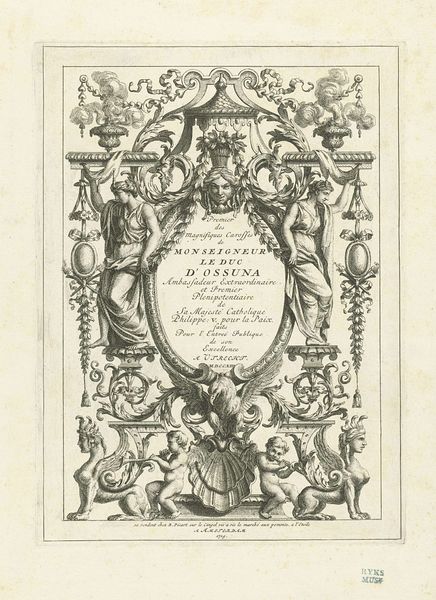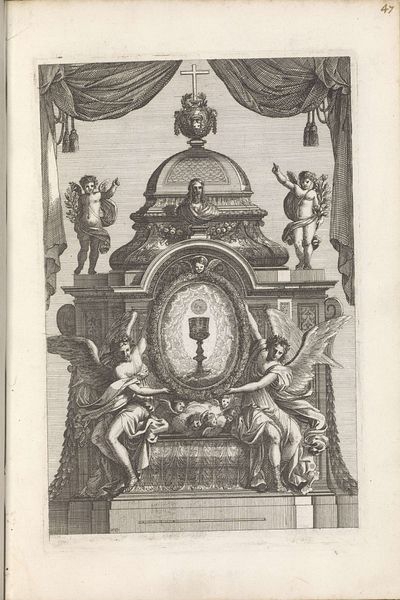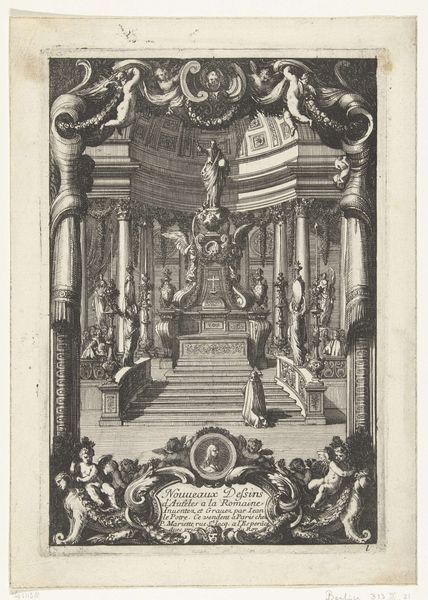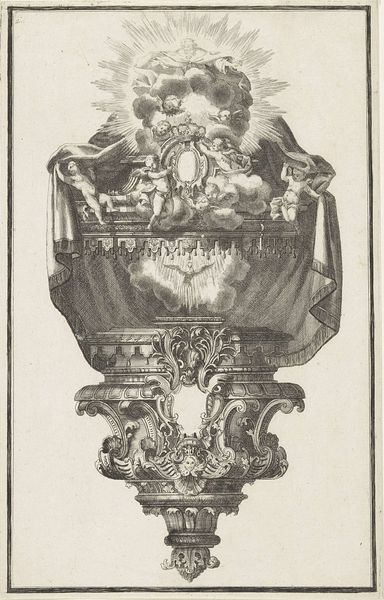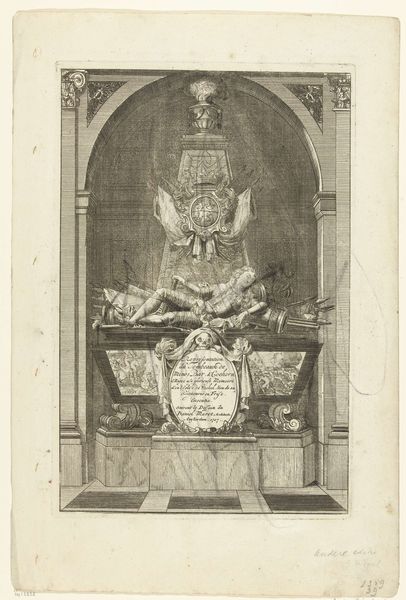
print, engraving
#
baroque
# print
#
perspective
#
line
#
cityscape
#
engraving
Dimensions: height 220 mm, width 149 mm
Copyright: Rijks Museum: Open Domain
Curator: Let's turn our attention to this engraving, "Titelblad: Vases à la moderne," created by Jean Lepautre in 1659. It resides in the Rijksmuseum. Editor: Well, right off the bat, I’m struck by the sheer ostentation of it. That vase dominates the entire scene. It feels like a celebration of… excessive ornamentation. Curator: Lepautre was working firmly within the Baroque style, a movement celebrated for its drama and grandeur, especially favored by royal courts seeking to legitimize and advertise power. The print itself would have been a tool, disseminating these visual ideals to a broader audience of artisans and patrons. Editor: I'm curious about the process. Engraving takes skill and physical labor to transfer design onto a plate—creating multiple copies that carry this specific vision into different workshops across Europe. The medium itself speaks of reproduction, industry...almost democratizing high design. Curator: Exactly! This wasn't just art for art’s sake; these images were functional. They instructed craftsmen, shaped taste, and, by extension, promoted French cultural dominance at a time when the nation sought influence on decorative and practical art. You can see, within the print itself, an almost stage-like setting, transforming urban space into a spectacle that encourages engagement from various social classes. Editor: But looking closely, I also think about the actual materiality. It starts with a metal plate—copper perhaps—worked intensely to hold the lines of that incredible vase and the perspectival architecture surrounding it. Those lines, so precise and replicated through the press, what stories could the discarded copper remnants tell about workshop economies, or artisanal waste, now long forgotten. Curator: Absolutely. It's easy to overlook the socio-economic dimensions embedded in what appears to be pure aesthetic form. Lepautre, and the publishing house who contracted the making of these images, played key roles in popularizing visual statements about monarchy and national style across Europe. Editor: So, we're not just looking at a vase then— but instead at a whole world of materials, labor, and power concentrated into one object! Curator: Precisely! Lepautre's "Vases" provides insight into the material culture of Baroque design and the role that prints played in shaping perceptions, class, and taste. Editor: And it encourages us to question what's truly at the heart of decorative ideals of the time. What appears so self-evident aesthetically actually has much deeper implications, hidden beneath the sheen.
Comments
No comments
Be the first to comment and join the conversation on the ultimate creative platform.
